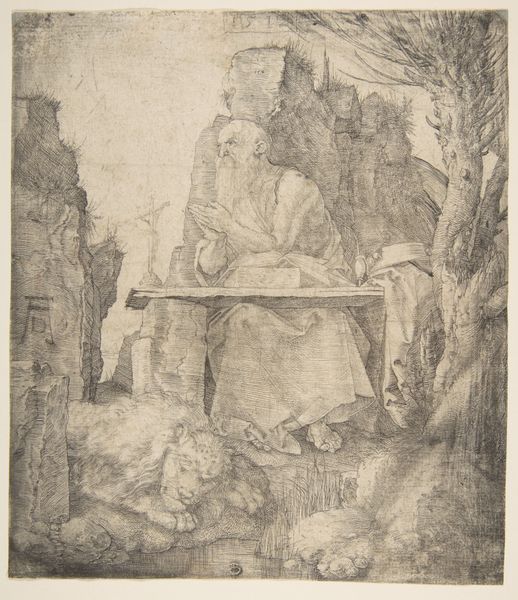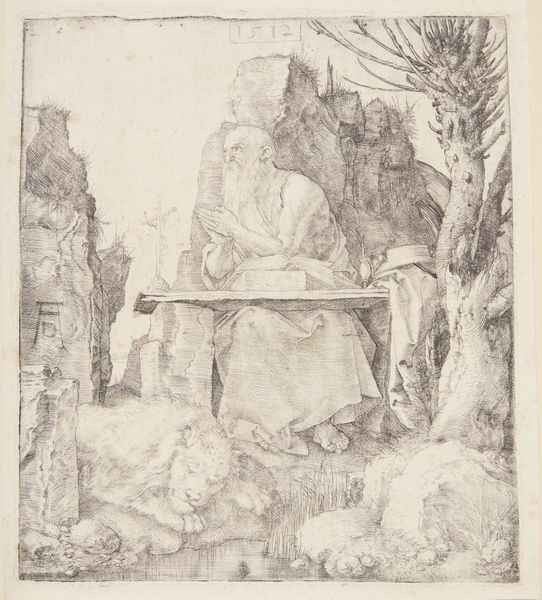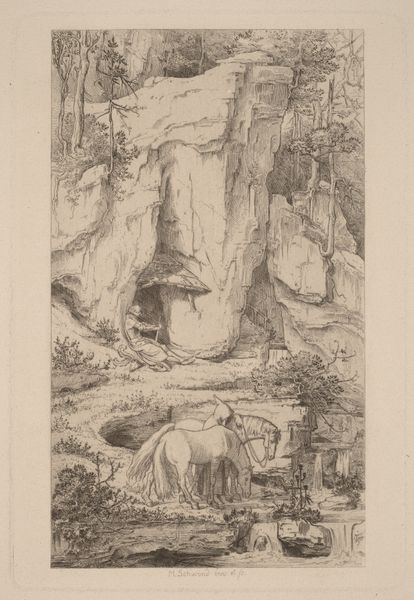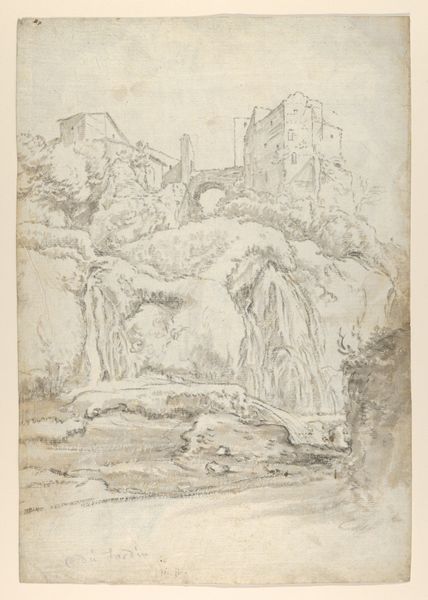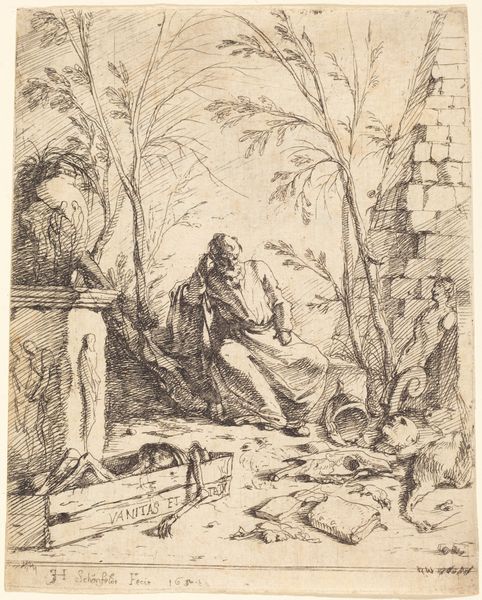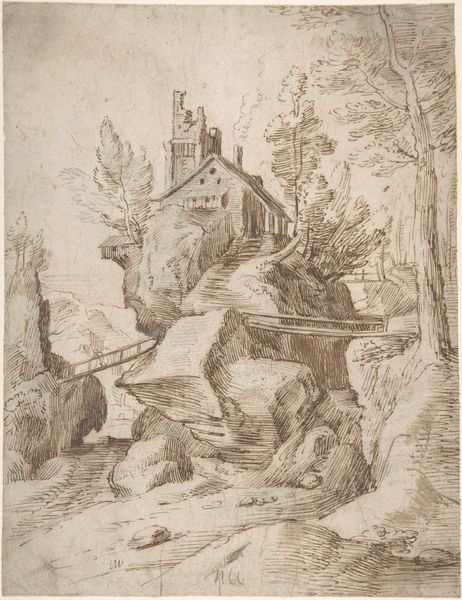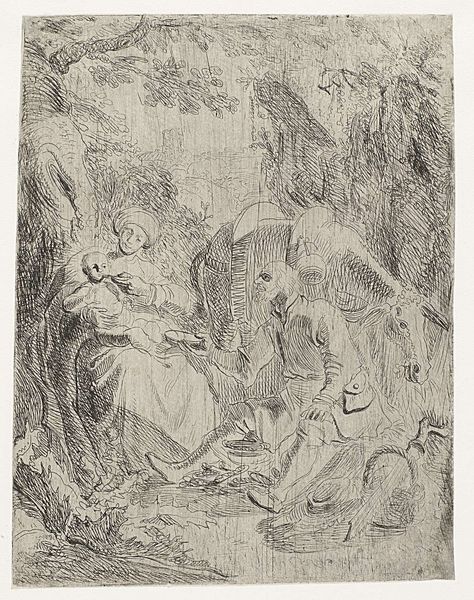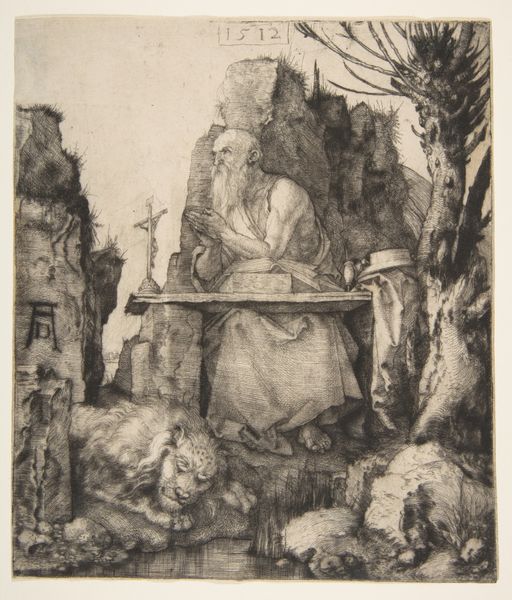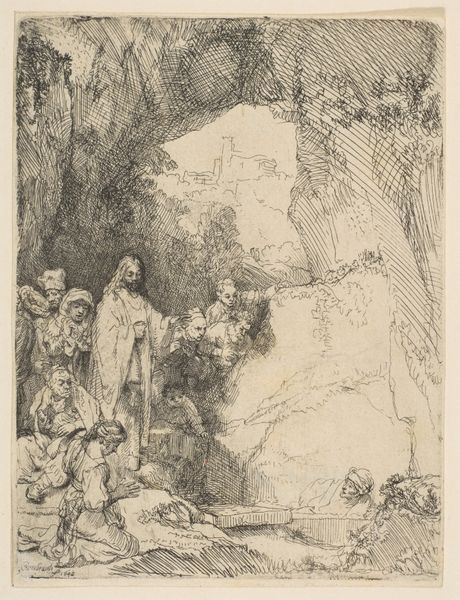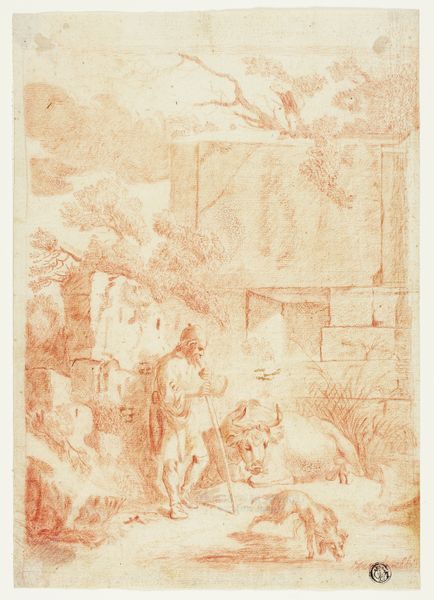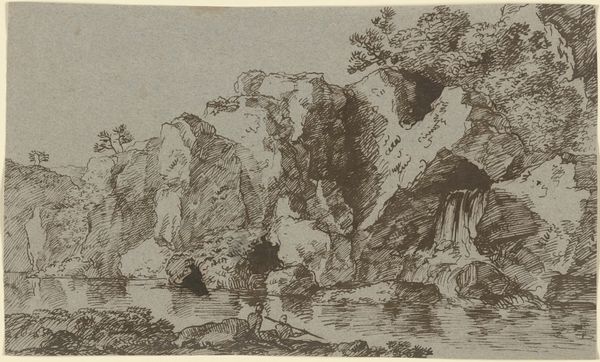
print, drypoint, engraving
#
portrait
# print
#
figuration
#
line
#
drypoint
#
northern-renaissance
#
engraving
Dimensions: 8 3/16 x 7 1/8 in. (20.8 x 18.1 cm) (plate)
Copyright: Public Domain
Editor: We're looking at "St. Jerome by the Willow Tree," a 1512 engraving by Albrecht Dürer, currently at the Minneapolis Institute of Art. The level of detail is just incredible. It feels almost photographic. What immediately jumps out to you about this piece? Curator: The intricate network of lines, achieved through drypoint and engraving, constitutes its most striking formal attribute. Observe how Dürer uses varied densities and directions of lines to sculpt volume and articulate textures—the lion's fur, the rough bark of the willow, even St. Jerome's skin. Editor: It's definitely masterful. The light seems to emerge from within the lines themselves. Does the placement of elements – St. Jerome in the center, the lion on the left – suggest something intentional about the composition? Curator: Precisely. The composition, viewed through a structuralist lens, orchestrates a compelling series of contrasts. Note the juxtaposition of organic forms – the willow tree and the lion – against the constructed geometry of Jerome’s study. Consider also the interplay of light and shadow and how this tonal range contributes to a rich visual dialectic. Editor: That makes me consider how much preparation he invested to accomplish these subtle tonal changes. I suppose an artist in that time had to invest the hours into honing the craft of it all. Curator: Undoubtedly. Through semiotic readings of light and shadow, texture and volume, we are reminded of how a keen artistic investment may communicate to a devout audience. Notice the figure of St. Jerome, a portrait and narrative element to deliver not just a picture, but a reading, an idea. Editor: I'd not thought to break it down like that, looking past subject alone to decode the language of it. Curator: Reflecting upon the piece’s internal relationships expands the interpretive capacity and reinforces its visual complexity. By engaging in visual analysis, we move from observing the artwork to actively understanding it.
Comments
No comments
Be the first to comment and join the conversation on the ultimate creative platform.
